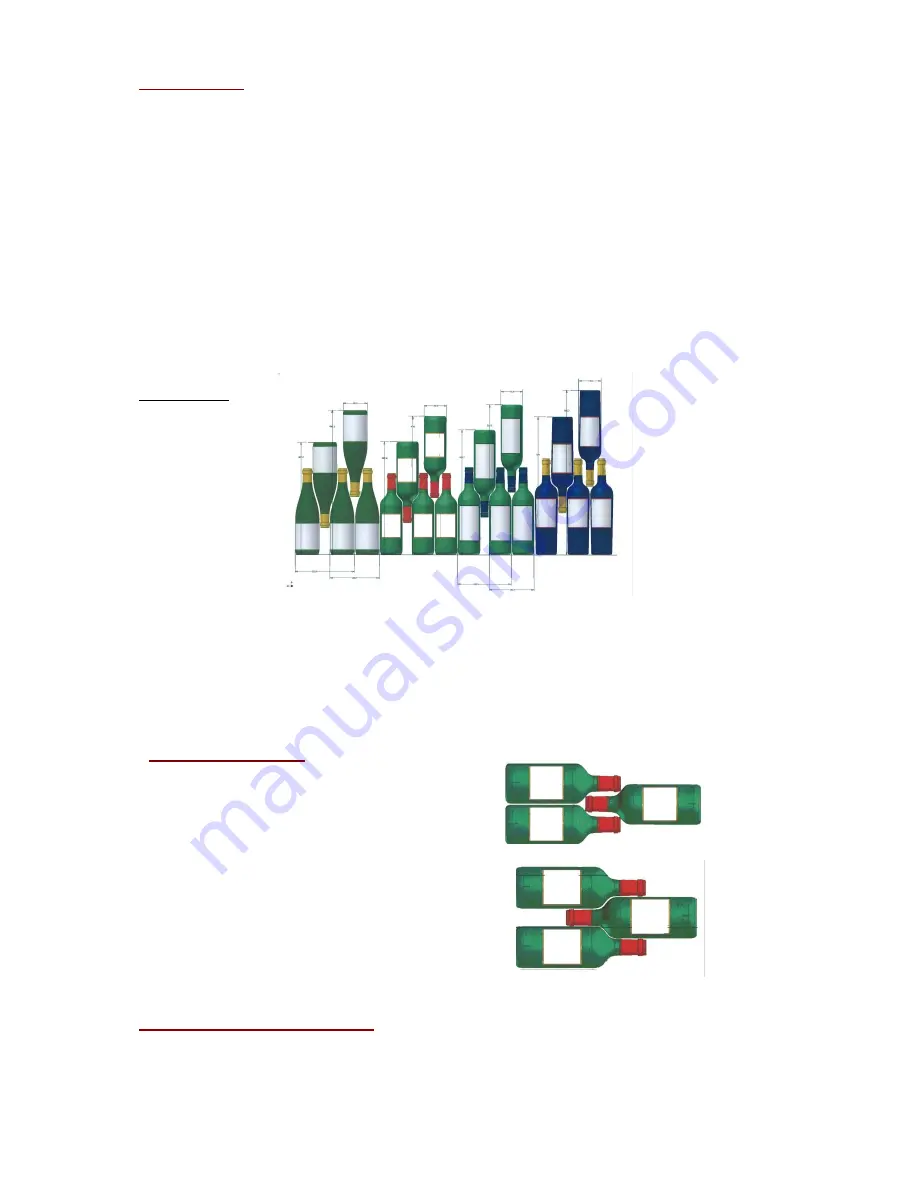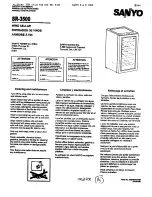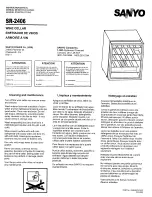
22
Enhanced safety:
Since this range of appliances is intended for storing items of value, we have been careful to select quality
components and to design suitable manufacturing techniques to ensure optimum safety in operation.
6. LOADING
The maximum recommended loading quantities for bottles are given as guidelines and are indicative only; they
provide a quick estimate of the size of the appliance (similar to the capacity of a refrigerator expressed in litres).
They correspond to tests conducted with a standard bottle: the standard “75 cl light Bordeaux” bottle - standards
apply the geographical origin of each bottle shape (Bordeaux, Burgundy, Provence, etc.) and a type (traditional,
heavy, light, flute, etc.), each with its own diameter and height.
In reality and in extreme cases, you could store more bottles by stacking the same type of bottle without using
shelves, but a varied cellar comprises a wide variety of bottles and the practical aspect of everyday cellar
management limits its capacity. You will therefore probably load the appliance a little less than the recommended
maximum.
How to fill and maintain your wine cellar:
Types of bottle:
We see here 4 kinds of 75 cl wine bottles: Burgundy and Bordeaux wine bottles of different dimensions.
There are many others of all shapes and sizes.
You will note the storage differences depending on bottle heights, diameters and alternating position method.
For example, if a wine cellar is loaded only with Burgundy wine bottles, there will be approximately 30% fewer
bottles than the initial quantity calculated for Bordeaux bottles.
Examples of serving temperatures:
(to be observed when tasting, in order to avoid missing out on the
rich aromas of your wines!)
Opinions vary, and the ambient temperature too, but many people agree on the following:
Methods of alternating:
Top-to-bottom neck-to-neck: For the
CLS160
Note the difference in depth
…
Top-to-bottom neck between bottle bodies:
For the CLS130
















































